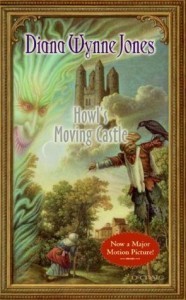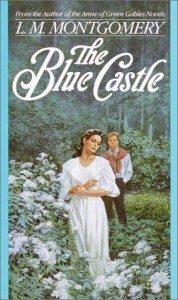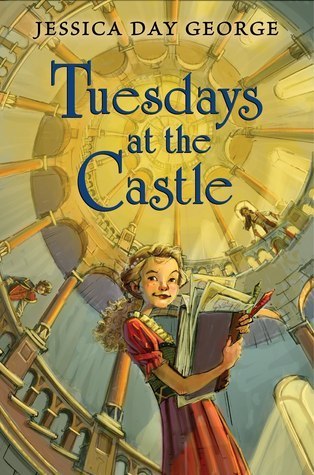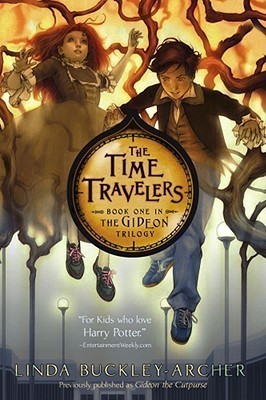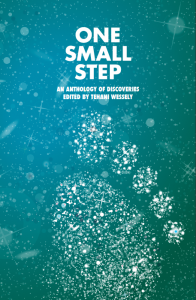Rabia Gale's Blog, page 12
May 29, 2013
Balticon 2013
David and I attended our first Balticon this past weekend. We were there for two out of the three days, and had a blast. I’ve attended a writing conference (Pikes Peak) and a writers’ workshop before, but this was my first convention. It was a very different experience!
The People
What I loved about this con was that it drew in readers, movie/TV fans, costumers, artists, and film-makers, as well as writers. We met a guy in a steampunk Tigger costume, a retired mailman into historical re-enactment, and a woman who’d sewn an Inara costume for a Firefly-themed wedding. I LOVED meeting people with these kinds of passions and skills.
(And, I also got to meet Linda Adams, although briefly. Hi, Linda. *waves*)
(Also, this was the first family-friendly writing-type thing I’ve attended. We’re thinking about bringing our own three next year.)
The Panels
Most of the panels I attended had to do with self-publishing (social media, podcasting, marketing, business) which fell in the New Media track (and so many of those were in a room tucked all by itself in an end corridor, hmm *wink*). There wasn’t much there that I didn’t already know–and when the panelists touched on anything new, it was in a cursory way, making me go, “Hmm, I’d better go research this when I get home.”
(I believe that cons are all-important for meeting people and getting that valuable face-time with them. Information you can get in spades online, usually in more depth and detail than can be crammed into a 50-minute panel.)
Things that I learned/need to look into:
* Google + for writers. There was an entire panel on this, but most of the panelists admitted they didn’t utilize this as well as they could. If you’re a writer using Google + extensively, I’d love to hear your thoughts. Also–I’d like to do a Google hangout sometime. Anyone interested?
* Podcasting fiction is a LOT of work. I think I’m better off hiring narrators down the road.
* At some point, I need to look into setting up a LLC.
* Why you need a business plan: So that you can gauge whether an opportunity is worth pursuing or not. Will this opportunity take you closer to your goals, or off in a different direction altogether? (Thanks to Gail Z. Martin for this insight).
* Advice on shopping around rejected stories you wrote for a themed anthology: Other writers are inundating the market with their rejected Machine of Death stories, so wait a year for the deluge to die down and then submit.
* Note to self: Science presentations are awesome. Attend more of them next time.
Special Events
The highlight of my weekend was the Steampunk Ball (and yes, David and I attended that in costume. We had hats and everything!). Susan de Guardiola, the instructor, was awesome. We did line dances and circle dances, and quadrilles, and much fun was had by all.
It’s amazing how being in costume can help you meet people. They will naturally stop by to comment on the costume or–in a few cases–ask to take your picture. Also, doing something with other people (like everyone failing to learn a dance) is a great ice-breaker. The next day, when you run into them again, you have something to chat about. (Though you might need to remind them who you are. They may not recognize you without the hat/goggles/hooped skirt.)
Have you attended science fiction & fantasy conventions? Which was your favorite?

May 24, 2013
WANAFriday: Books I Can Read Over and Over Again
My blogging group recently started doing weekly blog prompts to get our (collective) creative juices flowing. This Friday we’re posting about the one book we can read over and over again without getting bored. (Note: For this post, I’m sticking to fiction).
This prompt is a hard one for me because–as my husband well knows–I’m not much of a re-reader. (With my TBR pile as high as it is, I can’t afford to be!). But sometimes I just crave a comfort read, a chance to return to an old friend who I can rely on to entertain, uplift, and transport me into another world. All my favorite re-reads have some things in common: they’re set in locales far removed from my here and now, they bubble over with wit and whimsy, they have sympathetic characters, and they leave me with a smile on my face.
So, without further ado, here are three of my favorite re-reads (no, I couldn’t pick only one):
Howl’s Moving Castle by Diana Wynne Jones
When self-deprecating oldest sister Sophie is transformed into an old woman, she sets out to seek her fortune as cleaning lady to the horrible wizard, Howl. An all-around funny, touching, and romantic read.
Sylvester by Georgette Heyer
An impending marriage proposal from Sylvester, Duke of Salford, causes Phoebe Marlow to run away from her home into the teeth of a snowstorm. However, circumstances throw them together again, much to the amusement of all. An unusual heroine, comic situations, and a cast of fun characters make this a charming read.
Anything by L. M. Montgomery (yes, I cheated again)
But if I had to pick: Anne of Windy Poplars and The Blue Castle.
Everyone’s familiar with the red-headed Anne, but I love many of the lesser-known Montgomery books. In The Blue Castle, downtrodden 29-year-old Valancy learns that she has only one year left to live. For the first time in her life, she decides to say and do exactly what she wants, and discovers adventure, love, and beauty along the way.
I noticed two other things about my list of re-reads:
1. They all have romantic plots or subplots.
2. They are all books I first read as a teenager (back when, I suspect, I was more open to falling in love with books than I am now).
Updated with links to other participants:
Cora Ramos: Mistress of Synchronity
Linda Adams: The Beauty of Omniscient Viewpoint
Margaret Miller: Reading Books the Second Time Around
Ellen Gregory: My re-reading book: The Lions of Al-Rassan

May 20, 2013
book cover monday: middle grade covers
It’s been AGES since we last had a book cover post. Time to rectify that with some super-cute and stunning covers of middle grade novels. This is a post I’ve wanted to do for a while!
Let’s get to it!
The cheerful yellows and the spunky, bookish heroine of this cover never fail to make me smile. I really like the blue title font against the golden spiraling staircase, and the use of symmetry, height and light in this illustration.
A much more ominous color, though the illustration style gives away the genre. Love the way the title is incorporated into the tree and the way it pops out from the dark background.
I love the movement, the way the children are floating down, and the color contrast between the golds at the top and the blues/greys at the top. There’s a mystery in this cover that pulls me in.
Aww! Cute baby elephant! Spotlight effect! Bold title treatment, set off by decorative swirls. An eye-catching cover.
Deliciously creepy cover!
*
Do you have any favorite middle grade covers to share?
**
Check out my other book cover posts:
strong females
strong females (no weapons)
white backgrounds
cover artist: Larry Rostant
cover artist: Chris McGrath
cover artist: Dominic Harman
cover artist: Kinuko Y. Craft
cover artist: Ravven

May 17, 2013
Large Blue Horses by Franz Marc
One of my favorite pieces of art
Edited with links to other bloggers posting one of their favorite pieces of art:
Siri Paulson (everyday enchantments): Barbara Furtuna
Ellen Gregory (to beyond and back): Botticelli’s Venus
Liv Rancourt (Let’s have a devil of a good time…): Christ and St. Michael
Linda Adams (Soldier, Storyteller): Inspiration in Color in Washington, DC

May 15, 2013
business cards for writers
I have something cool to show you.
But first, some background.
Years ago, I used to take pictures, usually of flowers, sometimes of homeschool projects, often of my kids.
Then I got lazy. The camera was too unwieldy to take everywhere, it was too much of a pain to get the pictures off it, and my husband got an iPhone so it was easy for him to pull it out and snap a picture or two.
I got used to this, so when my cool new business cards arrived, I said (as usual), “Dear, can you pull out your iPhone and snap a picture of these?”
My obliging husband er… obliged, and took this picture:
Oh, dear. The brown background gave the black-and-white cover of Shattered an unfortunate sepia tint (not to mention my husband and his cell phone are usually only around after work in the evenings, when one has to use artificial lighting anyway–which can be trying).
So I asked him to take a picture with a light background.
He did so.
The Shattered cover looks closer to normal, but there’s that flash glare on the Rainbird one…
At this point my husband gave me the no-more-pictures-do-it-yourself look and went upstairs to give the youngest child a bath. I toyed with idea of posing the cards one more time, perhaps even unearthing the digital camera out of the depths of… wherever it is, fiddling with cables and getting into the photo-managing software.
That sounded tiring, even to me.
So there you have them: cell phone pics in trying lighting of my new business cards, which are ten times cooler than what they look like in this picture.
Pertinent details:
I used Moo for these cards. They came in two packs of 50. The “I break fairy tales” version comes with the Shattered cover. The “I fuse fantasy & science fiction” comes in Rainbird and Mourning Cloak flavors.
Perhaps I should have gone with rounded edges? Any thoughts on that for next time?
The QR codes go straight to my website. If I’d been clever–or had more time–I could’ve set up a special business-card-exclusive page on my site for goodies, but I didn’t. Note to self: Remember that for next time. However: QR codes! Eeek! I’ve always wanted them!
They came with a 15%-off coupon code for first time card orders, so if you want it, leave me a comment and I’ll email it to you.
The reason why I hurried up and got these is because:
a) I meet people in Real Life. Sometimes I even tell them I’m a writer. Sometimes they even ask about my books and seem interested when I tell them. Sometimes I wish I had a business card to give them. Well now I do!
b) I’m going to Balticon at the end of the month! With the husband. Who will have his cell phone. So there will be pics. Trying pics, probably, but pics nonetheless.
Do you have writer business cards? Take a picture (with a cell phone, of course *wink*) and share them with us! Do you have other offline marketing tactics to share?

May 8, 2013
how to collaborate with another writer: a case study
One Small Step: an anthology of discoveries launched last weekend at Conflux. I’m honored to have a story (co-written with the super-talented Jo Anderton) included in it.
This was my first ever collaboration, and I thought it’d be useful to talk about how the process worked out for us.
The Setup
Last fall, Tehani Wessely, editor of the anthology, contacted Jo and me with the idea of collaborating on a short story for One Small Step. We (metaphorically) looked at each other, looked at Tehani, and said, “Sure!” After all we’ve been friends for almost a decade now (has it really been this long, Jo?) and have a lot of experience with each other’s work. Even though our styles are different, we have enough common overlap that we could (probably) handle writing a short story together.
It was also the perfect project for collaboration. Neither of us was playing in the other’s sandbox (“hey, want to write a story in my world?” “Er… no.”) nor was our canvas unlimited (“So what shall we write together?” “Uh, I dunno”). We had a theme (discoveries), a form (short story), and a deadline.
So, we got to it.
The Idea
Almost immediately, we ran into some uh… differences in our processes.
Me, I come up with an idea, then run with it. I churn out several pages to see where it’ll go. Sometimes the idea works, sometimes it doesn’t. I have lots of unfinished short stories on my hard drive. I consider them regrettable but expected casualties of my writing process.
Not so with Jo. She isn’t willing to latch on to the first shiny idea that floats by. She wanted to wait for something special, the idea that set her story senses a-tingle.
So we waited for the lightning strike (some of us more patiently than others). A week or so later, Jo emailed me a photo of an old woman huddled in a doorway with an ornate doll next to her. “I think there’s a story in this picture,” she wrote me.
By golly, she was right.
We were both fascinated by this picture and traded speculations back and forth for days. Both of us agreed that dolls were creepy (I kept having flashbacks to Child’s Play). Then I remembered Hinamatsuri, or Dolls’ Day in Japan. We put the two together and I–yes, well I did what’s natural to my style–forged ahead and wrote a bunch of snippets exploring character, plot, and setting.
I think Jo knew I was chomping at the bit, so she let me. We talked over the snippets a lot (and I learned something about Jo: she doesn’t like to write about royalty). Both of us were very excited and creeped out about what we were getting. And I really appreciated Jo’s insistence on digging deep into the idea and taking it from good to great. “Good enough” doesn’t exist in her vocabulary, and it’s a lesson I’m applying to my own writing from now on.
An Aside
I’m going to pause here to mention one very important thing: do not look at a collaboration as something that will save you time. More likely, it won’t. Jo and I could’ve probably written two stories each in the time it took us to write Sand and Seawater.
Think about it this way. When you’re writing your own story, you only have to satisfy two people: You and Your Muse. When you’re writing with someone else, there are two Yous and two Muses, and they all need to be on board. It’s bad enough keeping one pairing happy, but two…!
(Oh, and apparently, our Muses have some telepathic connection that doesn’t go through us. Now that is also creepy.)
The Actual Writing!
All right, so once we were happy with our ideas, we started writing! Luckily for us, there were two POVs, so Jo took the doll and I took the old woman. We alternated scenes, and I noticed a style difference right away. My scenes sprawl, while Jo writes tighter. Once we hammered out the plot and nailed the climax, we each went through to cut out redundant material and tighten everything up. (I may be a first-draft sprawler but I’m ruthless when wielding a red pen).
A fitting concluding scene took us a bit of back-and-forth, but I think, again, we nailed it.
Checklist For Success
I would call this a very successful collaboration. Not only did we sell the story, but:
We are both very proud and pleased with it.
This is a story that neither of us would’ve come up with on our own.
And–most importantly–we’re still friends. And we both see this experience as a net positive, not something to be quietly shoved into a closet and never ever done again. We’re both too much of loners to do a lot of collaboration, but who knows? In the future you might be seeing more work with both our names on it. *is deliberately vague and mysterious*
Jo has her own thoughts about our collaborative experience here (link might not work until later in the day, since she’s already gone to bed).
Have you collaborated? Share your experiences!

May 7, 2013
a month of quartz episodes
Episode Eleven of Quartz (in which Rafe has his first–and only–firedancing performance) went out to Inboxes and RSS feed readers all over the world today. This marks the end of the first month of running the serial (-ish, I’m too lazy to look up the exact date I started).
So, how’s it going?
The most awesome news is that I have subscribers and readers! Many have tweeted about the serial (many thanks for that!). Generous donors have covered episodes every Saturday so far (this upcoming Saturday is the first one with no episode scheduled).
The only wrinkle is that there’s little reader engagement in the comments section. Yes–even though it’s hard to tell, every episode *is* open to comments, and I am happy to receive any thoughts or feedback.
To those of you following the story, I hope you continue to enjoy it. There’s a lot of fun stuff coming your way, including more backstory on how Rafe’s weird sunless world got to be the way it is, the discovery of a resource that could change the political landscape, and a hint of what Isabella’s real agenda is.
Happy reading!

May 2, 2013
proofs! and a release!
My proofs for Rainbird and Mourning Cloak arrived earlier this week.
Aren’t they pretty?
They look EVEN BETTER in real life.
There really is nothing like seeing your name on the cover of a physical book. I had an ear-to-ear grin on my face for about an hour after they came.
Right now, David’s checking them for errors (I know, I know, I’m spoiled). They should be ready to go in a week or so. Keep an eye on this space!
***
One Small Step: an anthology of discoveries launched last weekend at Conflux. Jo Anderton and I have a story in there. “Sand and Seawater” has already gotten some nice shout-outs on Goodreads, and the anthology as a whole has been favorably reviewed in places like Publisher’s Weekly.
Next week, I’ll post about our experience collaborating on this story.
***
I’ve been busily working away on some short stories for the past couple of weeks, including some broken fairy tales for a follow-up to Shattered. I’m hoping to get that out in June and then buckle down to Ironhand and release that a couple months later.
What are your writing plans? Do you have any new or upcoming releases? Let us know in the comments!

May 1, 2013
cartoon jaguars talk art and business
Last week, I talked about what I’ve learned from my favorite how-to freelance book, The Freelancer’s Survival Guide by Kristine Kathryn Rusch. The week prior to that, I shared 4 things I’m doing as a working writer.
Now that I have a writing-as-business theme going, I’m going to continue it.
Back when I first self-published Shattered, I had little clue about how to go about running my brand-new business. Luckily, I stumbled on to another of my favorite art business resources, this time by author and artist M. C. A. Hogarth. She uses three cartoon jaguars to illustrate business principles, first in her columns and most recently in a webcomic. What I love about Hogarth’s approach is that she puts both the right and left sides of the brain to work for the professional artist.
Hogarth separates the roles of a working artist into three: Artist, Marketer, and Business Manager (hence, the three jaguars). This trichotomy (oh look, it’s actually a real word) makes it easier to put needed walls between the various roles–and also the doors that act as communication channels between them.
Hogarth has a ton of great insights, but my single biggest takeaway from her columns (we’re talking about fireworks going off in my head, people) is this one.
Ready?

copyright M. C. A. Hogarth, used with permission from the artist
Every artist should internalize this principle–preferably before you bring your work into the marketplace (or else the economic realities might well crush your very soul).
Every piece of art–a one-of-kind costume, a story, a musical composition–has inherent value. Its value is in what it means to the artist and/or the emotional response it evokes in someone who experiences it. This is not a value you can put a dollar price on.
However, what you put on the marketplace is not art, but a product. A short story that sells to an anthology is a product. A song available as a digital download is a product. The handmade doll on the vendor’s table at the Renfest is a product. And products are subject to economic realities like demand and supply to determine their prices.
Making that distinction is helpful because it separates artistic merit (or value) from monetary compensation. It keeps the Artist part of you from sinking into a funk because you put the novel that took you a year to write on sale for 99 cents. It keeps you from tying your artistic identity too closely to sales and money.
It also helps to realize, as Hogarth explains in a different column, that a single piece of art can be the basis of many products.
Before reading the three jaguars columns, I had the attitude that once I sold a story, it was gone. First rights had been all used up, and there was nothing else I could do with it. If I was very very lucky, and the stars were aligned just so, an editor might ride up on a white horse contact me for reprint rights, but I wasn’t holding my breath.
Hogarth’s examples showed me how limited my thinking was.
Today, thanks in large part to a changing industry, I can create many different products from that one short story I sold to the anthology. I could bundle it with other short stories and sell it on Amazon. I could license its audio rights to a podzine. I could have it translated into different languages. I could sell it to a magazine that accepts reprints.
Each time that one story is re-released in a different format or venue. One story becomes many products.
I’m currently serializing Quartz, a science fantasy set in a sunless world, using the same model Hogarth uses for her serials. Quartz updates weekly on Tuesdays, but a $5 donation gets you an extra episode on Saturday. Once the serial is run, I’m going to have it formatted into an e-book and put it up on Amazon, Smashwords, Kobo and all. Someday, I might even hire a narrator to do an audio version. One story becomes three products–each reaching a different market.
This concept also takes the pressure off me as an artist. I’m working on increasing my productivity (mainly by plugging my biggest leak, the Internet), but I can also enlist my Marketer’s help in finding new places for my existing work. Artist’s output may vary from month to month, but it’s the Marketer’s job to impose regularity in the production schedule.
All of Hogarth’s columns are well worth the read. Also be sure to catch the webcomic’s current storyline about why any artist being paid for her work needs to pay attention to the business side of things. It could save you a world of trouble.

April 24, 2013
business resource: the freelancer’s survival guide
I usually wake up on Thursdays with an extra spring to get me out of bed (and, boy, do I need all the help I can get!). Not only is Thursday past the halfway point of the school school (one day away from Weekend Eve) but it’s also the day that Kris Rusch updates her weekly writing/business column.
If you don’t yet subscribe to it, you should! Rusch draws on years of experience as a publisher, editor, and full-time fiction writer to talk about industry-wide changes and how to navigate them.
Rusch is also the author of The Freelancer’s Survival Guide, which is available free on her site as a series of blog posts as well. I’m on my third (fourth?) re-read of the book. Rusch wrote this book for all freelancers, not just writers, and the topics she covers are applicable to anyone working for themselves (or thinking about it). They include planning, discipline, money management, negotiating, advertising, and more. There’s so much information in here that I would be hard-pressed to write a thorough review of the book without going on for pages and pages.
Instead, I’ll focus on those areas that have jumped out at me on my current re-read.
I went back to the Guide because I was having serious discipline issues. At the beginning of April, just as I was congratulating myself for having avoided all the sicknesses that plagued the rest of my family this winter, I came down with the Sinus Infection From He** and lost a week to it. Then I lost several days because I’d gone into “I’m Sick” mode and my body had gotten used to being lazy and my mind had gotten used to letting it slack off. After that, I was faced with incredible resistance to finishing Ironhand, the sequel to Mourning Cloak, because it was just a hard project.
So I lost about half of April. I knew I needed a kick in the pants, because if I don’t write, I don’t sell. If I don’t sell, I don’t earn money, and if I don’t earn money, then I go back to writing for myself–which means I end up with lots of unfinished novels and short stories while I chase one shiny idea after another.
I went to the Guide for help and found that Rusch takes very serious steps to deal with leaks–those time sinks that we want to cling to and should be utterly ruthless about dealing with. I needed to hear that she’s learned (through bitter experience) to never begin a book until after her day’s writing is done, that she keeps the Internet and games off her work computer, and that no fiction but her own is allowed in her home office.
My big leak is the Internet. If I’m not careful, it can take over my writing time, my prayer time, and my housework time.
(Never school time, though. I’m very disciplined about my children’s schooling, probably because I was very disciplined as a student, too. Unfortunately for me, all being good at school is good for is… being good at school.)
This is why I’m downloading the Freedom app to try out.
Right now, I’m working my way through the money management section of the Guide, which is a real eye-opener. My most important takeaway from this section? Pay yourself.
Most freelancers are focused on making their business pay for themselves, ie: their income from the business covers their business expenses. Most of us, however, don’t include paying for our own time in the equation. We get our business to the point where it pays for itself–but not for our own personal bills. Not rent, not groceries, not clothes, not utilities.
Many of us have spouses who pay for all of that.
I’m still at the point where I’d consider it a milestone for my writing business to pay for itself, without including my salary. Last year, I ran at a loss. This year, I’m ahead, but I’ve kept my expenses low. For instance, I haven’t commissioned any covers yet (my biggest expense), but they’ll be coming. I also get a lot of unpaid help–for instance, my husband does my e-formatting and print layout. The business should be paying him for his time, too, but I can’t really afford his hourly rate (he’s an experienced programmer, and luckily for us his day job *can* afford him *grin*).
I got into writing because I’ve always been a story-spinner. Even if I stopped writing, I’d keep making up stories in my head, because there’s no OFF switch for it in my brain. I keep writing because selling stories and sharing them with readers is a great motivator for me. Treating writing as a business keeps me focused on increasing my productivity and improving my craft. This is one of the reasons why a book like the Guide is more inspiring to me than a feel-good, Cinderella tale of making it big. The Guide gives me practical steps and realistic expectations, things I can apply in my own writing and business.
Read the whole thing. You can peruse the blog posts, buy the entire Guide or only the sections you’re interested in. I highly recommend this as a great starter book for any freelancer–whether you’re a writer, a house-cleaner, or consultant.


